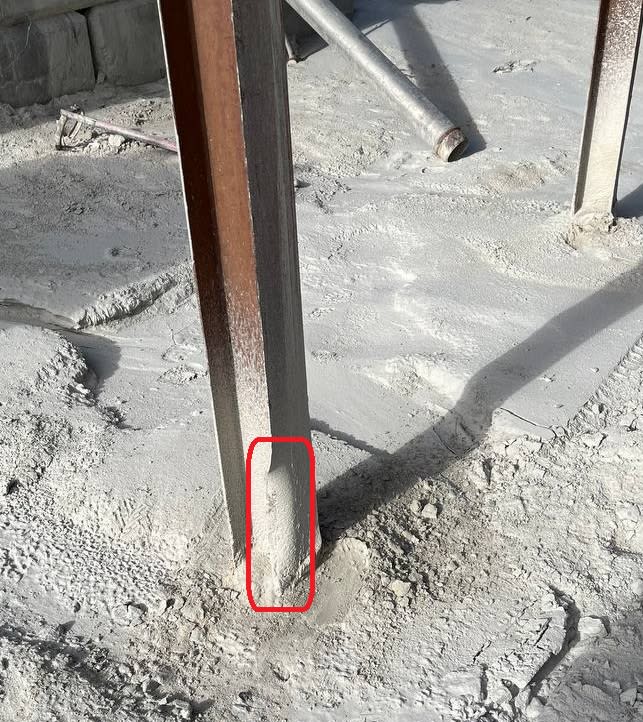JADEN98
Structural
- Aug 27, 2022
- 12
I have been asked to prepare a report on repair options for a wide flange column (W6*15) damaged from collision in a mine. Although the damaged area (bottom 20" from the base plate) is far away from the critical zone of buckling, I believe repair is necessary considering the increased vulnerability of the section to local buckling and corrosion. The senior engineer at our office dismissed the case as a "non-issue" and said to "just put a plate on the damaged flange and suggest concrete bollard as an alternative long-term solution". Wouldn't it be necessary to heat straighten the flange before welding a cover plate on it? And if not, would the length of the plate above the damaged zone be equal to the weld length required based on the shear flow demand plus the width of the flange?
As for the alternative solution, wouldn't concrete encasing be a more technical solution rather than putting several bollards around the column? Should the reinforcement and anchorage of any concrete solution be calculated based on a composite section behaviour or just an independent protective cover against collision?

As for the alternative solution, wouldn't concrete encasing be a more technical solution rather than putting several bollards around the column? Should the reinforcement and anchorage of any concrete solution be calculated based on a composite section behaviour or just an independent protective cover against collision?


![[pipe] [pipe] [pipe]](/data/assets/smilies/pipe.gif)